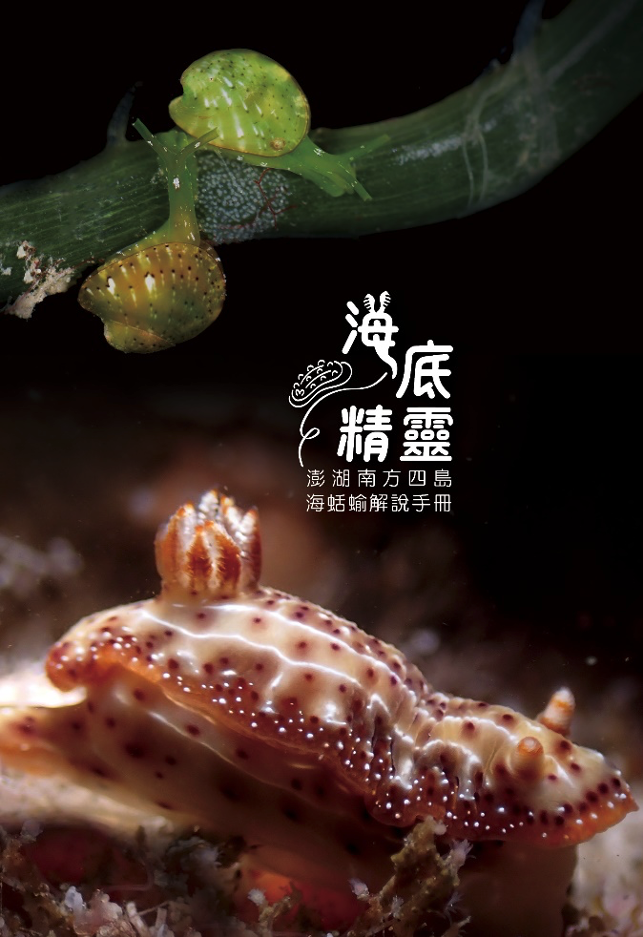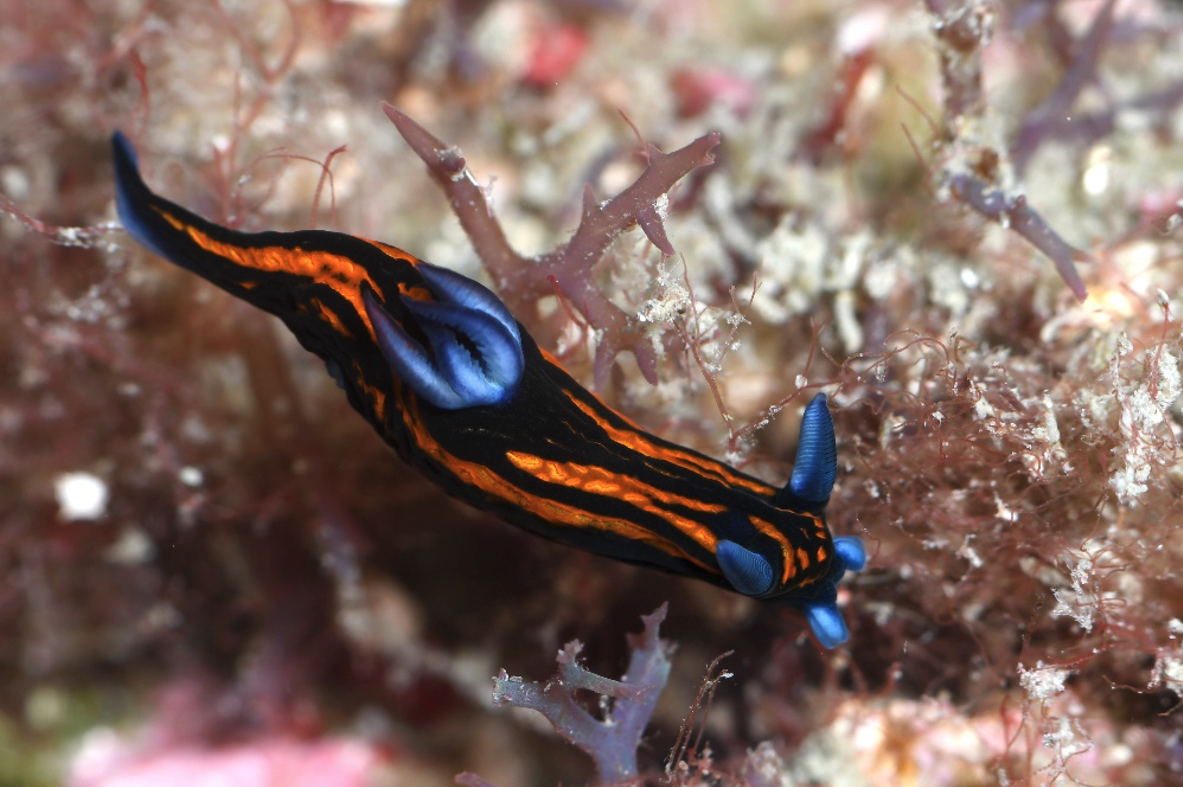Beneath the shimmering surface of the azure ocean, coral reefs, often hailed as the "rainforests of the sea," teem with an extraordinary diversity of life. Yet, within this vibrant underwater world, many tiny, inconspicuous creatures often go unnoticed. Among these, the sea slugs, renowned for their dazzling colors, are perhaps the most enigmatic. Like elusive ocean jewels, they shine brightly yet are easily overlooked, despite potentially playing a pivotal role in maintaining the stability of coral reef ecosystems.
Our latest survey findings from the South Penghu Marine National Park reveal astonishing sea slug diversity in the local waters. Over several months in 2024, our research team conducted intertidal and subtidal diving surveys, discovering an impressive 201 species of sea slugs. Of these, 87 are new records for the area, indicating that the richness of this place far exceeds expectations.
Sea slugs are more than just beautiful. Their evolutionary strategies are truly remarkable. Some species can harness chloroplasts from algae to perform photosynthesis, while others release toxins to deter predators. Still others feed on sponges, bryozoans, and corals, meticulously selecting their microhabitats for survival. They often reside in the crevices of coral reefs, forming intricate networks with corals and other small invertebrates. Within coral reefs, the ecological functions provided by these tiny creatures are irreplaceable. They participate in nutrient cycling, energy transfer, and even serve as indicators of coral health. Certain sea slug species prefer specific coral or sponge habitats, and their presence or absence can reflect the overall health of the reef.
Supported by the results of this research, the Marine National Park Headquarters has simultaneously launched "Underwater Elves: A Guide to Sea Slugs of the South Penghu Marine National Park." This comprehensive book features 102 species of sea slugs from 31 families, all documented through field observations. It not only provides detailed descriptions of each species' morphology and ecological habits but also brings these underwater elves to life through exquisite photography, allowing readers to feel as if they are submerged, witnessing their graceful movements firsthand. The book also delves into the intertidal and subtidal environments of the South Penghu Marine National Park, helping readers understand the ecological rationale behind where these sea slugs choose to live.
However, this beautiful underwater world is not without its challenges. Globally, pressures such as climate change, coral bleaching, anthropogenic disturbance, and marine pollution threaten sea slugs and their vital habitats. Rising sea surface temperatures can lead to the depletion of their food sources and even impact the dispersal and reproduction of their larvae. Protecting these hidden lives is not merely an act of conserving a single species; it's a crucial effort to maintain the overall health of coral reefs. From establishing long-term monitoring systems and reducing human activity disturbance to designating marine protected areas, every effort helps preserve life for these ocean glimmers and holds hope for our marine future.
Our latest survey findings from the South Penghu Marine National Park reveal astonishing sea slug diversity in the local waters. Over several months in 2024, our research team conducted intertidal and subtidal diving surveys, discovering an impressive 201 species of sea slugs. Of these, 87 are new records for the area, indicating that the richness of this place far exceeds expectations.
Sea slugs are more than just beautiful. Their evolutionary strategies are truly remarkable. Some species can harness chloroplasts from algae to perform photosynthesis, while others release toxins to deter predators. Still others feed on sponges, bryozoans, and corals, meticulously selecting their microhabitats for survival. They often reside in the crevices of coral reefs, forming intricate networks with corals and other small invertebrates. Within coral reefs, the ecological functions provided by these tiny creatures are irreplaceable. They participate in nutrient cycling, energy transfer, and even serve as indicators of coral health. Certain sea slug species prefer specific coral or sponge habitats, and their presence or absence can reflect the overall health of the reef.
Supported by the results of this research, the Marine National Park Headquarters has simultaneously launched "Underwater Elves: A Guide to Sea Slugs of the South Penghu Marine National Park." This comprehensive book features 102 species of sea slugs from 31 families, all documented through field observations. It not only provides detailed descriptions of each species' morphology and ecological habits but also brings these underwater elves to life through exquisite photography, allowing readers to feel as if they are submerged, witnessing their graceful movements firsthand. The book also delves into the intertidal and subtidal environments of the South Penghu Marine National Park, helping readers understand the ecological rationale behind where these sea slugs choose to live.
However, this beautiful underwater world is not without its challenges. Globally, pressures such as climate change, coral bleaching, anthropogenic disturbance, and marine pollution threaten sea slugs and their vital habitats. Rising sea surface temperatures can lead to the depletion of their food sources and even impact the dispersal and reproduction of their larvae. Protecting these hidden lives is not merely an act of conserving a single species; it's a crucial effort to maintain the overall health of coral reefs. From establishing long-term monitoring systems and reducing human activity disturbance to designating marine protected areas, every effort helps preserve life for these ocean glimmers and holds hope for our marine future.



